Sandálias Havaianas is one of the most famous Brazilian brands in the world, but how did this fame come about? In this article we will talk about Japanese sandals Zori, and how they played an important role in Brazil.
Índice de Conteúdo
Havaianas sandals are not from Brazil?
When I was a child and I saw the ads on TV, I believed that the havaianas brand was from Hawaii, but it was all marketing because of the success that Hawaii had in the 60s in Hollywood.
After that, I always thought that Hawaiian sandals were a Brazilian invention, but I was surprised this week to discover that it was foreigners who created the brand in Brazil. Like this?
Havaianas were created by espadrilles, a company founded by a Scotsman Robert Fraser in union with an English industry. They came to Brazil to create shoes for factory workers.
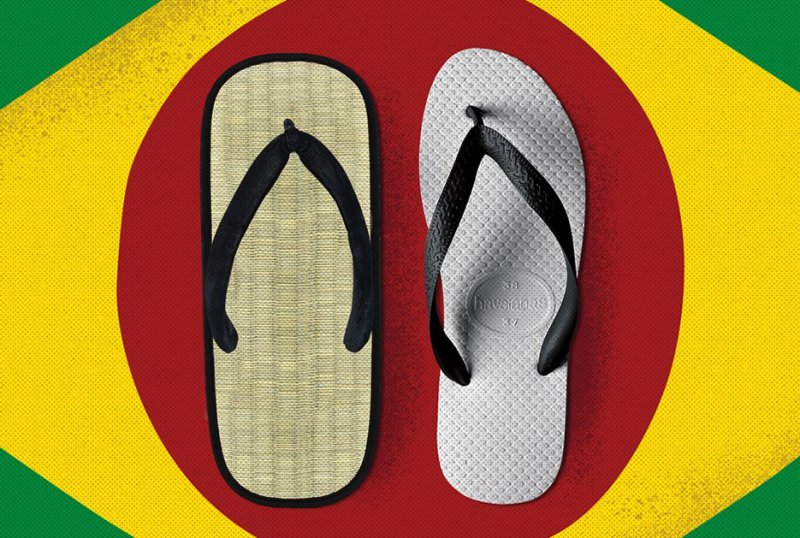
Before the Havaianas, the company espadrilles launched other shoes in Brazil such as the Conga. And I imagined that the Hawaiian-style sandals or zori has existed for thousands of years. What did Brazilians wear before?
What some may not know is that Hawaiian sandals were inspired by Japanese footwear. zori. These shoes were made of rice straw, but there were similar models even made of wood.
The company claims they came up with this idea when traveling in Japan, but I wonder if any Japanese descent wore a zori before the 1960s here in Brazil. Maybe pass through the unknown prejudice that Brazilians had after the second world war.
Zori - The traditional Japanese sandal
At zouri [草履] are Japanese flat sandals with straps that can be made of rice straw, lacquered wood, cloth, leather, rubber or synthetic material. At zori they are basically japanese flip flops.
At zori Traditional garments are made of wood or rice straw and are often worn with traditional clothing such as kimono. They were made open to prevent feet sweating due to Japan's humid climate.
The Japanese usually use a sock called tabi together with zori. These socks only have the toe split with the other toes. Some are so thick that they can be worn without shoes, just like ninjas wear.
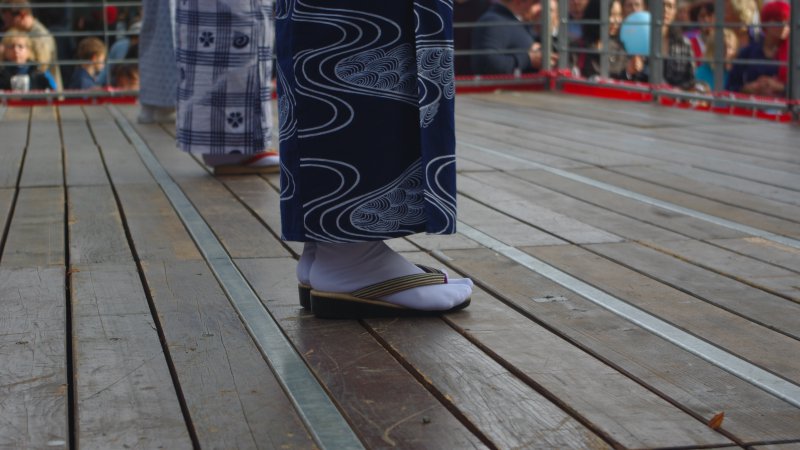
It is not known for sure how the Japanese invented the zori, but it was probably influenced by China and Egypt, where the first traces of a slipper can be found. It is believed that the zori appeared in Heian period (794-1192).
At zori not only influenced Brazil, but even the Americans got to know the famous flip-flops after the second world war when soldiers returned to the US bringing these Japanese Chinese.
Hanao - Zori vs surippa and uwabaki
So much zori as geta has Y-shaped handles, these handles are called Oh no. The Japanese believe that the function of Oh no is to improve the health of the feet, they believe they need skills to use them.
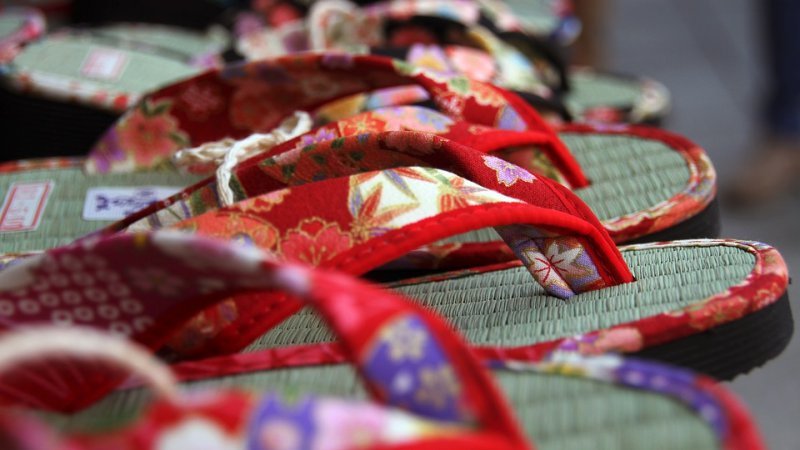
In case you didn't understand, these straps are the parts of Hawaiian flip flops that usually break. The one that shares the big toe with the other toes. In Japanese shoes this part is usually made of fabric.
Brazilians are used to these flip-flops with Y straps, but the Japanese are not so used to wearing these flip-flops, using geta and zori only when wearing traditional attire such as kimono and yukata.
Perhaps the difficulty with Japanese sandals is the fact that the hanao is made of fabric, which makes it difficult for the feet to fit. In Brazilian flip-flops, this part is synthetic and is usually hard, allowing the feet to be easily fitted.
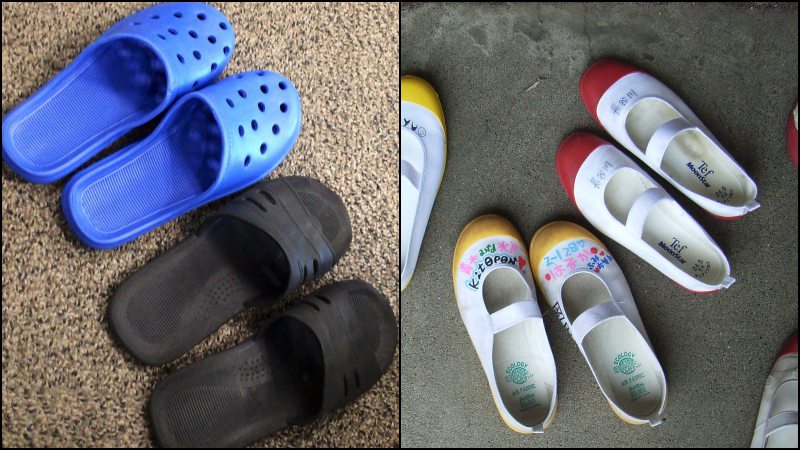
Japanese Chinese are usually in the style of slippers that hold the feet. This makes it easier to put them on when entering houses and taking off your shoes. Not to mention that they are comfortable and warm, which helps against the cold that dominates most of the year.
These flip-flops that resemble slippers are called surippa [スリッパ] and are used indoors together with another type of footwear called Uwabaki [上履き] which resembles open shoes.
The article is still halfway through, but we recommend also reading:
Zori vs Geta - What are the differences?
Zori is usually made from rice straw, while Geta is made of wood. Although the fundamental forms of geta and zori are similar, there are big differences when you pick them up and look at the bottom of them.
at the bottom of geta there are wooden stilts or protrusions called “teeth”. The standard geta requires two of these teeth that make contact with the ground, making a noise when someone is walking.
people often use geta in non-formal situations when wearing a yukata. the sandals zori are used when wearing a more formal outfit such as a kimono. It seems a controversial situation, since the geta seems more complicated to use.
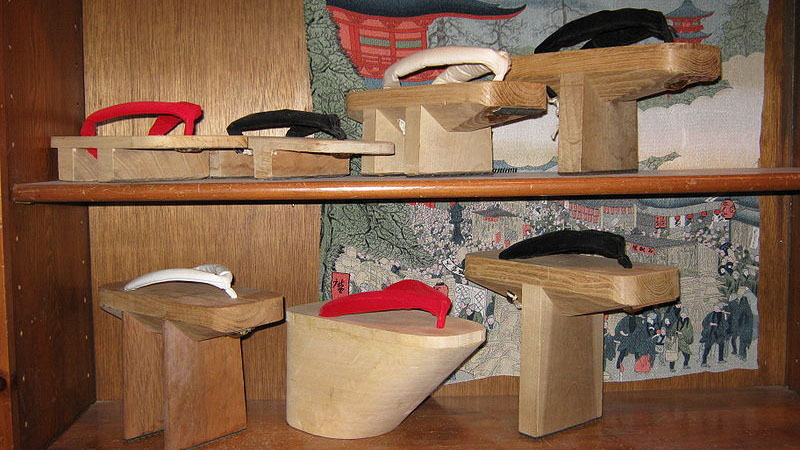
shoe teeth geta they were used to avoid getting your clothes dirty or tripping and falling, since in the old days the roads were not paved as they are today. Currently the scenario is reversed, it seems easier to fall using a geta.
It is worth remembering a little Okobo, also known as bokkuri, pokkuri and geta koppori. It is a type of geta used by geishas and maiko during its learning, being easy since it has no teeth or protrusions.
Waraji - the poor man's slipper
Waraji [草鞋] is a traditional Japanese footwear used in the past by common people and was made using straw ropes. Waraji can be considered a form of zōri, so they are used similarly.
The main difference in usage between zouri and waraji is that the toes traditionally protrude slightly out over the edge of the waraji. This doesn't happen with zouri.
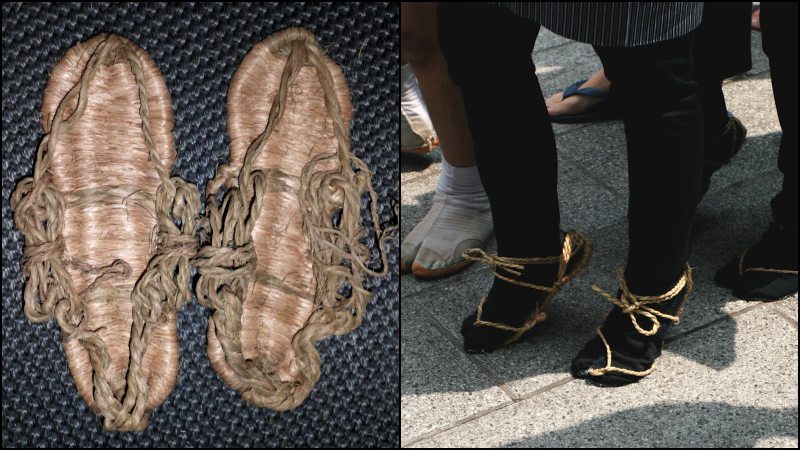
Nowadays, only Buddhist monks usually wear waraji. O waraji is used without the tabi socks. In addition to Oh no, these flip flops can also have ribbons to tie to the feet like some shoes that women wear.
I hope you enjoyed this article. If you liked it, share it and leave your comments. Did you know these curiosities about Japanese shoes?
Where to buy a Zori?
You can buy a Japanese zori sandal below:





